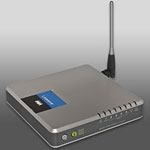
IT is widely acknowledged that optical fibre is the future access technology of choice, especially in urban areas due to its bandwidth capacity, access distance and less interference.
Rolling out a new fibre access network to the building / home etc (FTTx) is very expensive. It is estimated that deploying FTTx requires massive capital expenditure, approximately two to five times higher than required for existing copper plant.
The biggest barrier to internet access is not technology or even geography but rather lack of income. It would also be hugely irresponsible to effectively de-commission the entire current copper network and thereby also removing the ability to deliver broadband over the HFC networks when this infrastructure could be used – with some additional investment – to deliver significantly improved high-speed broadband.
It is against this background that TelOne has launched the ADSL and SHDSL broadband services.
Asymmetrical digital subscriber line (ADSL) broadband ADSL stands for (Asymmetrical Digital Subscriber Line). This is a broadband solution offered through the copper medium and transmits data at different speeds in the downstream and upstream directions.
Typically, home and small users business use access the internet more to download rather than upload content as such the download speed is higher than the upload speed. Users can download data at speeds of up to 2Mbps and upload data at speeds of up to 1Mbps.
The ADSL connection is permanent, the user does not need to dial up or set up the connection every time they need to access the internet. A splitter or DSL filter, also allows a single telephone connection to be used simultaneously for the ADSL service and voice.
The service can span a range of 7km radius within the serving broadband Point of Presence (PoP).
- MDC-T ordered to pay Khupe aide’s outstanding benefits
- Mwonzora suspends Epworth losing candidate
- Financial constraints slow down ICT penetration
- The endemic marginalisation of rural artistes
Keep Reading
Symmetrical high-speed digital subscriber line (SHDSL) broadband SHDSL is an acronym that stands for Symmetrical High-speed Digital Subscriber line. This is a last-mile solution offered through the copper medium capable of transmitting the same data rate in both directions.
The advantage of this capability is that corporate customers and SMEs can host mission critical applications at their premises that can be accessed from the internet or remotely without throttling the movement of data in either direction. Examples of such services are web servers, ERP services, video conferencing and other cloud computing services. The customer gets a static IP address (network or device identity) from TelOne for such services and networks to be published on the internet.
SHDSL broadband service can be offered to customers without major network rewiring and can be implemented quickly as it rides on the existing copper infrastructure. The connection requires an SHDSL modem connected to either two-wire or four-wire copper cable that terminates on the serving network equipment. SHDSL service can span a range of 7km radius within the serving broadband Point of Presence (PoP). The service can achieve 2Mbps speeds using two-wire copper lines.
The speeds can be doubled by employing four-wire copper lines to achieve an aggregate transfer rate of 4Mbps. TelOne leased internet and Data•One tariffs will apply for this service.
Unlike ADSL, SHDSL does not allow users to make calls on the same line connected to the SHDSL modem. Customers are encouraged to dedicate one of their telephone lines for this service or apply for a new telephone line from TelOne.








